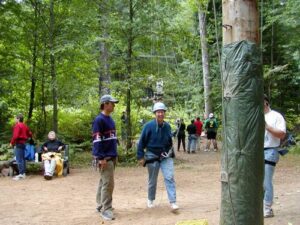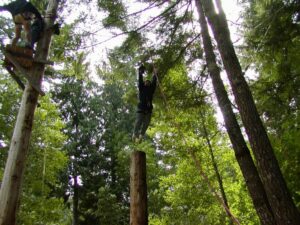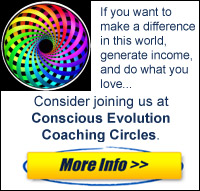Two Perspectives on Transition
Dr. Amit Nagpal, New Delhi, India, and
Dr. Janet Smith Warfield, Florida, USA
___________________________________________________________________________________________________
.
Dr. Amit Nagpal’s Perspective
 A Parting Note
A Parting Note
Tools for Transformation (Earlier known as ‘Two Perspectives’) series is coming to a close as both Janet and I have transitioned and have developed new focuses. We have been writing this column for the past 3 years, though frequency of publishing has changed in between.
Janet and I decided to write one last blog together and then refer our readers to our new focuses. Interestingly “Two Perspectives “ which we started in May 2011, was the idea of Dr Janet. Subsequently, I have written many twin series inspired by the success of Two Perspectives (Hug and Nudge with Jennifer Sertl, USA Japan and India with Peter Sterlacci , Japan, and Uncovering our inner greatness with Michael Thallium, Spain)
Background
In simple words transition is a significant change from one state/concept/stage to another. Since the first blog on two perspectives, I have transitioned in many ways:
From Personal Branding to Digital Storytelling. Life coaching is part of personal branding and the focus in two perspectives has been personal development (life coaching). I have transitioned to Digital Storytelling (Inspirational Storytelling of people and brand storytelling of organisations). I have ventured into offline storytelling and during the next two years, I will be taking a deeper dive, especially into different areas of storytelling in a corporate context, besides my current focus on storytelling content development for clients.
From Blogger to LinkedIn Author. I am now publishing my more formal and serious work on LinkedIn. The blog has more semi-formal work including mini-stories on wisdom/love, musings etc. Publishing on LinkedIn adds credibility to your content, besides serving a larger audience. I also expect LinkedIn to become the third largest search engine soon (after Google and Twitter) especially for professional articles. The ‘Search articles’ function of LinkedIn is likely to become more and more popular and the high Searchability of LinkedIn on Google/search engines will make it even more influential.
Transitions are necessary, time-consuming and sometimes painful.
To evolve as a human being, transition is sometimes necessary yet it is often time consuming and painful. Sometimes it is like taking a U-turn and starting from scratch again. It becomes all the more important to do sufficient reflection and weigh the pros and cons before deciding on a significant transition.
Enlarge Excel Evolve reaches 500
500 posts are considered an important landmark for a blog and also demonstrates its long journey and credibility. As a mark of honor to the series and the successful collaboration, I am publishing this blog post as 500th post on my Blog and plan to celebrate and publicize this great partnership with Janet and maybe plan an eBook at the appropriate time.
Goodbye with a heavy heart
Sometimes the transition can be expansion and little bit of tweaking and twisting rather than taking a U-turn. In my case, transition from personal branding to digital storytelling is more of an expansion and tweaking.
The only painful part of this transition is not being able to devote time and do justice to the “Two Perspectives” column. I will miss Janet and the immense learning which has been happening in my writing (and word sculpting) journey in the companionship of Janet.
Sometimes life has to go on and we have to bid goodbye to the old story with a heavy heart. Yet it is the only option to welcome a new story into life or maybe for starting a new chapter in the life story.
__________________________________________________________________________________________________
.
Dr Amit Nagpal is Chief Inspirational Storyteller at AL Services. He is a Social Media Influencer, Author, Speaker/Trainer & Coach. To know more, visit www.dramitnagpal.com. (His special interest and expertise lies in inspirational storytelling, anecdotes and visual storytelling.) AL Services offers content development/story writing, consulting, training and other services in the area of brand storytelling. To know more, write to amit@dramitnagpal.com
___________________________________________________________________________________________________
.
Dr. Janet Smith Warfield’s Perspective
 .
.
Dr. Amit Nagpal and I have been co-blogging now for three years. Our procedure has always been to agree on a topic, write our own blog without reading the other’s blog, and then post the blogs simultaneously on both of our websites.
Two different perspectives, two different writing styles, and two different bases of experience have emerged. Our topics have ranged from Dark Nights of the Soul to Tools for Transformation, from Love to Conscious Mind, from Piercing the Veil of Word Illusions to Silence.
We both like to tell stories. We both offer diagrams to illustrate our points. It has been great fun! I have learned from Amit as I believe he has learned from me.
It is now time for both of us to move on. Amit is heavily focused on developing A.L. Services, an inspirational storytelling organization, coaching deeply passionate entrepreneurs and “intrapreneurs” to share their conscious and emotionally connecting stories. You can download Amit’s free ebook I Too Want to be “A Storyteller” here.
I am heavily focused on a doctoral dissertation in Wisdom Studies with Wisdom University, as a Circle Leader in Conscious Evolution Coaching Circles, developing Vistar Circles on the West Coast of Florida and in Flat Rock, NC, and developing a Membership Site, Expand Your Consciousness.
Amit has been a wonderful, accountable, collaborative co-blogger, with a charming sense of humor. I highly respect him and encourage you to follow him and his work as he moves along his new path. You can find him at his Company Website, LinkedIn Author, and Personal Website.
I also invite you to continue to play with words, play with wisdom, and Expand Your Consciousness at my new Membership Site. There are already many pages, videos, and images to explore, with many more to be added. Many are free.
If Going Deeper interests you or you want to get answers to Anything You Want to Know, there is a small monthly membership fee – simply enough to support my time and expenses.
I invite you to continue your own exploration, discovery, and consciousness-expansion in dialogue with other fascinating co-creators. There is plenty of opportunity to comment or add your own thoughts. Let’s get a spectacular, infinite, and unending dance of words and wisdom going at Expand Your Consciousness.
__________________________________________________________________________________________________
Dr. Janet Smith Warfield serves wisdom-seekers who want understanding and clarity so they can live peaceful, powerful, prosperous lives. Through her unique combination of holistic, creative, right-brain transformational experiences and 22 years of rigorous, left-brain law practice, she has learned how to sculpt words in atypical ways to shift her listeners into experiences beyond words, transforming turmoil into inner peace. For more information, see www.wordsculptures.com, www.janetsmithwarfield.com, and www.wordsculpturespublishing.com.

 A Parting Note
A Parting Note
 My helmet and harness were securely in place. My belay team were holding firmly to the ropes that would gently guide me back to earth if I lost my balance and fell. I was determined to do this.Climbing the pole was easy until my hand reached the last metal support near the top of the pole. Then I had to, some how, some way, get my feet up on top of the pole and stand up – without anything to support me.
My helmet and harness were securely in place. My belay team were holding firmly to the ropes that would gently guide me back to earth if I lost my balance and fell. I was determined to do this.Climbing the pole was easy until my hand reached the last metal support near the top of the pole. Then I had to, some how, some way, get my feet up on top of the pole and stand up – without anything to support me. For a moment, I stood tall, focusing with laser-like intention on what I had come to do: forgive the father of my children for deserting us. Then, I leaped into space, struck the celebration bell with my hand, and, with the support of my belay team, glided swiftly back to the ground.
For a moment, I stood tall, focusing with laser-like intention on what I had come to do: forgive the father of my children for deserting us. Then, I leaped into space, struck the celebration bell with my hand, and, with the support of my belay team, glided swiftly back to the ground.

Comments